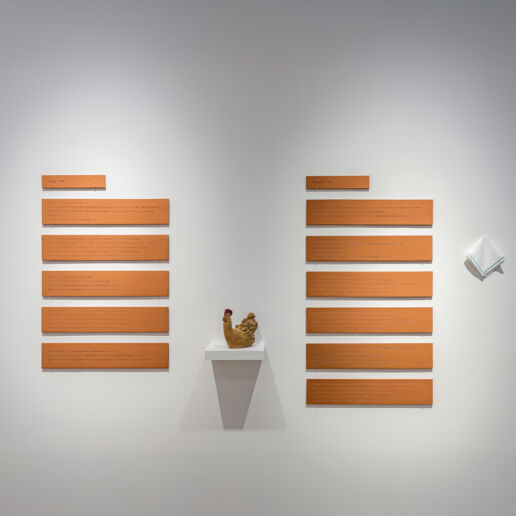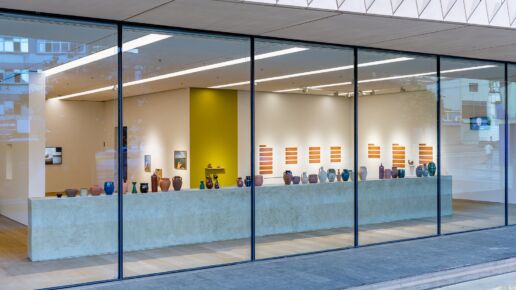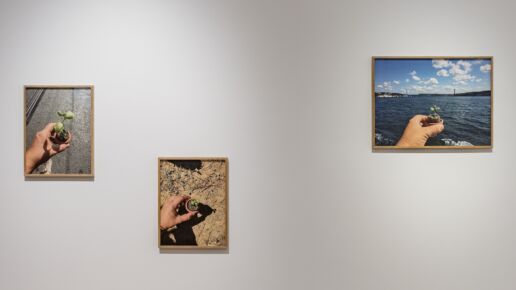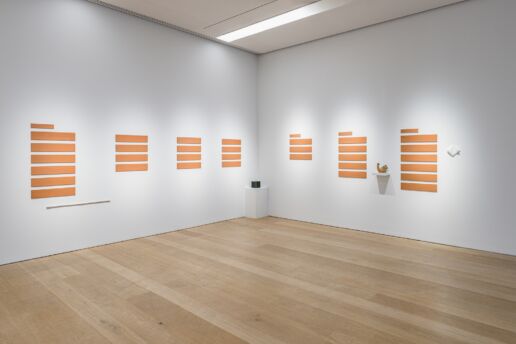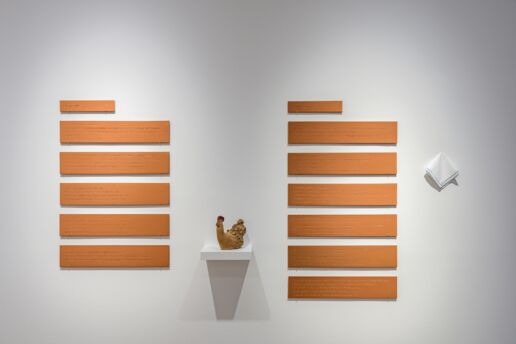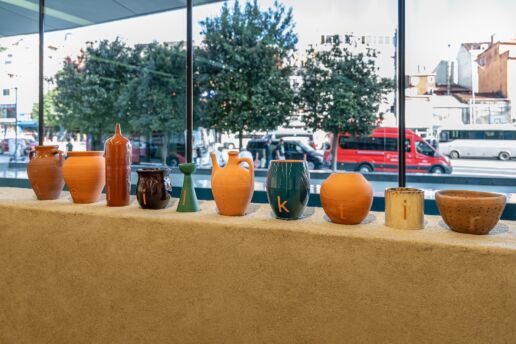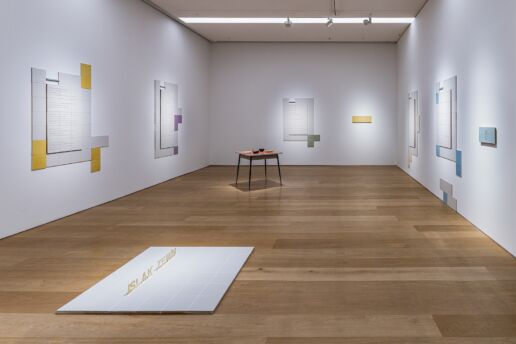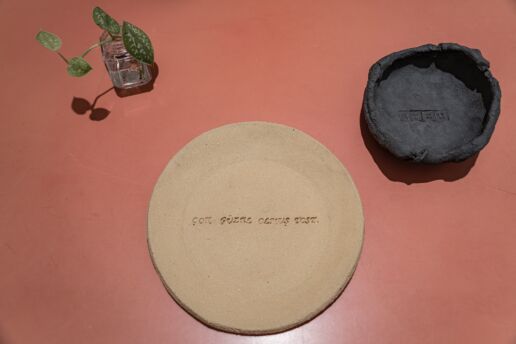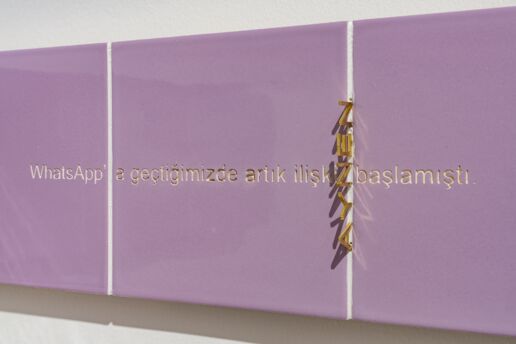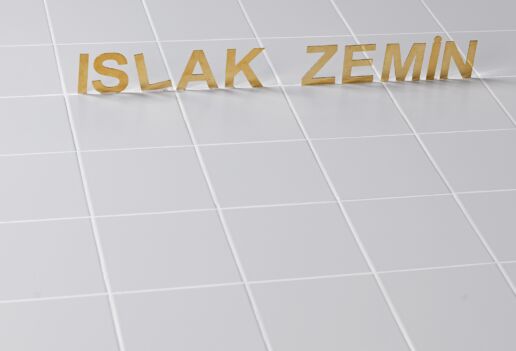YASEMIN ÖZCAN’S EXHIBITION AT ARTER: WET FLOOR
Yasemin Özcan is an artist who can touch our deepest emotions with the simplest words. Her new solo exhibition, Wet Floor, greets visitors at the entrance level of Arter. We had the opportunity to discuss both her artistic practice and her thoughts on Wet Floor.
I first encountered Yasemin Özcan’s work last year at the Memory of the Future exhibition at Pera Museum. Standing in front of her pieces for minutes, I felt something indescribable in the core of my heart. The phrase “Remembering everything is a kind of madness,” from her work, lingered in my mind long after the exhibition. I am fortunate to have had the chance to hear her talk about her new exhibition in person.
At the entrance of the exhibition, visitors are met with a photograph titled Hope or Light’s Stress. This image, born from an unexpected encounter Yasemin experienced in her kitchen sink after a long mental “vacation” years ago, now greets visitors as they step into Wet Floor. Described by the artist as “the embodiment of fragile hope,” the photograph hints at the blend of despair and hope that everyone in our region has felt—a mixture of emotions that accompanies us throughout the exhibition.
BEKTASHI ARCHITECTURE
Between 2012 and 2016, while exploring how a belief rooted in rural areas adapts to urban life, Özcan discovered a striking detail about Bektashi architecture: “They avoid sharp corners in interiors so that people don’t develop sharp edges in their characters.” Flexibility, both literal and metaphorical, holds a central place in Özcan’s artistic practice. In the exhibition, soil appears both as a building material and a metaphor for cultural transmission. Small clay sculptures materialize these ideas, reflecting an ancient wisdom. Accompanying this metaphor is one of our most basic emotions: anxiety. Özcan explains, “I think the relationship between our anxiety and wisdom is in constant deadlock.”
One of the most thought-provoking elements in the exhibition is a massive adobe plinth with an inscription questioning what we remember and forget and the fragile balance between madness and sanity. This line, etched in Özcan’s memory from Brian Friel’s play Translations, invites visitors to ponder these themes. Özcan’s explorations of human-soil, memory-language, and autobiography-fiction relationships are most evident in this space, where letters are carved onto ceramic forms collected from workshops across Turkey. The ceramic sieve, an object abandoned during the transition to plastic materials, holds a special place in Özcan’s narrative, serving as a testament to the value of tradition and labor.
Intergenerational Narratives
Above the plinth, an image of Özcan’s grandmother gazes at visitors, reminiscent of a watchful figure standing on her balcony. This piece symbolizes the artist’s deep curiosity about intergenerational transmission, migration, and identity construction. Grandma Zekiye reappears in the densely engraved tablets, reminding us of the inescapable truths of our geography. For those who wish to reflect on inherited womanhood, these tablets are a must-read.
The Wet Floor Room
Moving towards the room that gives the exhibition its name, visitors pass other stops where Özcan immerses them in the usage, circulation, and transformation of soil as a material. In the Wet Floor series, fictional texts etched onto industrial tiles explore expectations surrounding relationships, moments of encounter, and flirting practices through the voices of characters from different cities. Observing visitors smile as they read these texts, I share a smile with Özcan.
In a time when fleeting connections and rapid communication dominate, Özcan’s works capture and summarize our thoughts and experiences with keen observation and wit. I can’t help but laugh inwardly at the irony of a deep, cast-iron pan inscribed with You Are Enough for Yourself; a sly nod to societal pressures on singles like myself, questioning the institution of marriage.
Yasemin Özcan’s ability to cherish her roots, make time for self-discovery, and approach life with irony while nurturing hope is truly commendable.
*Curated by Eda Berkmen, Wet Floor is open for visitors at Arter’s ground floor gallery until June 4, 2025.


